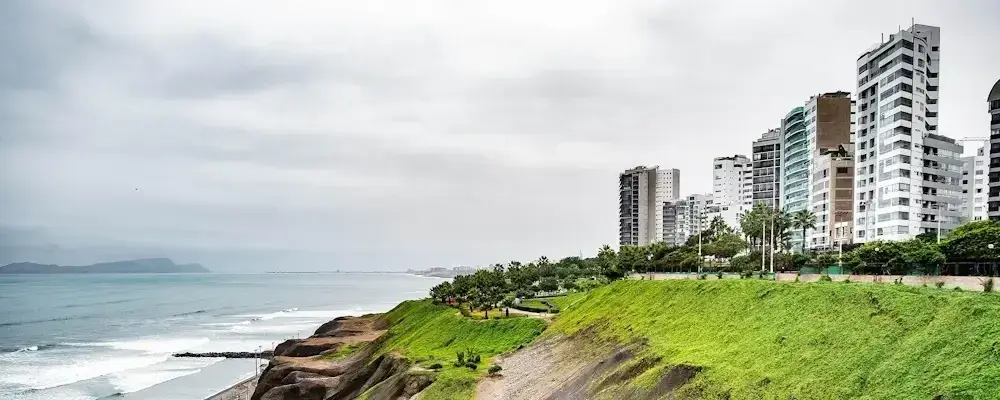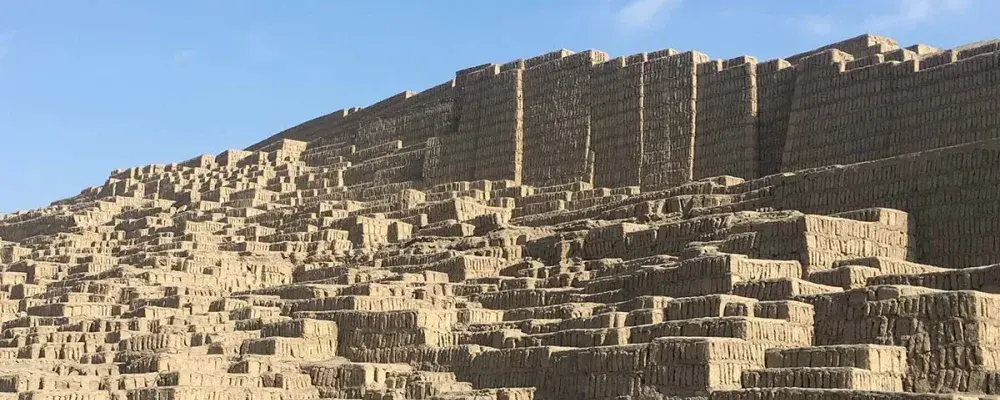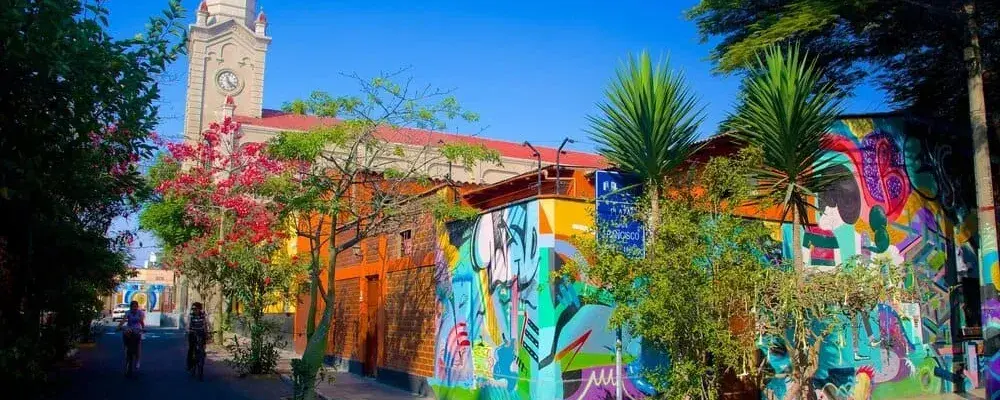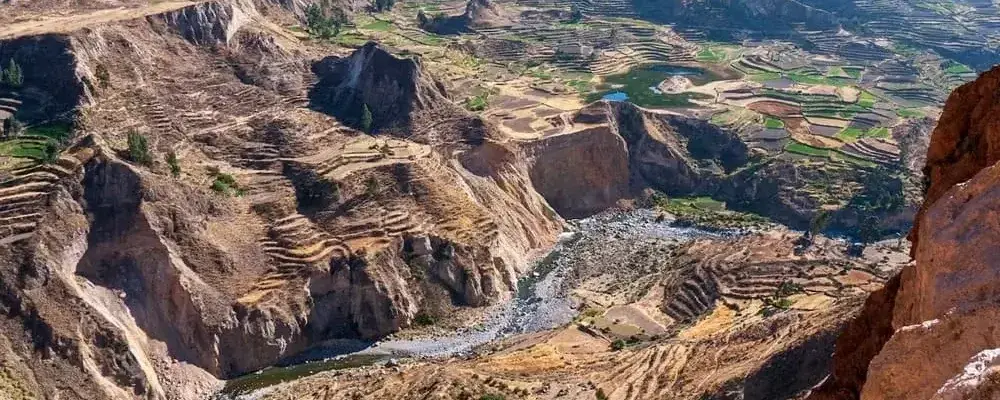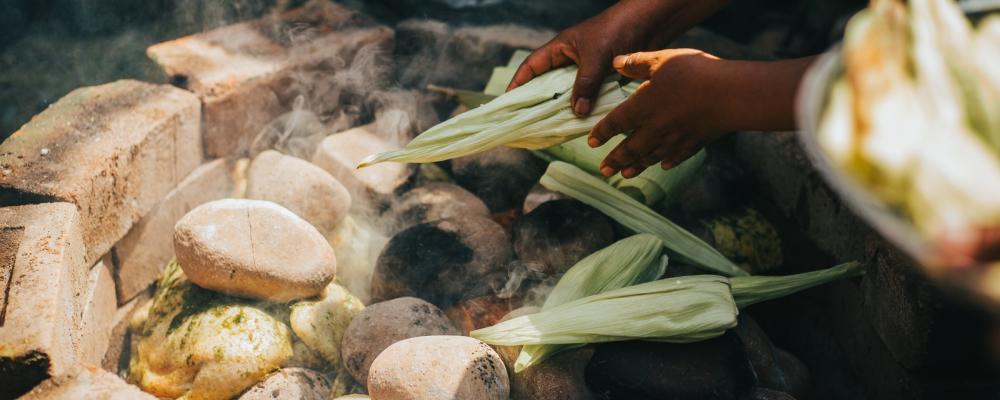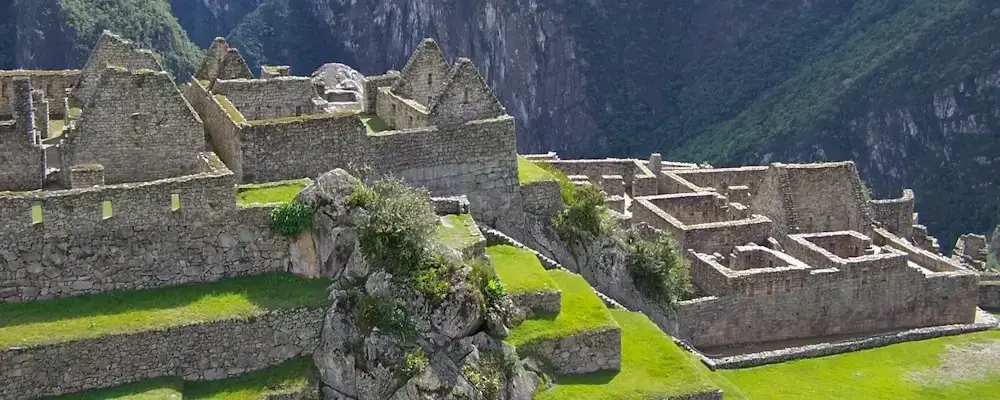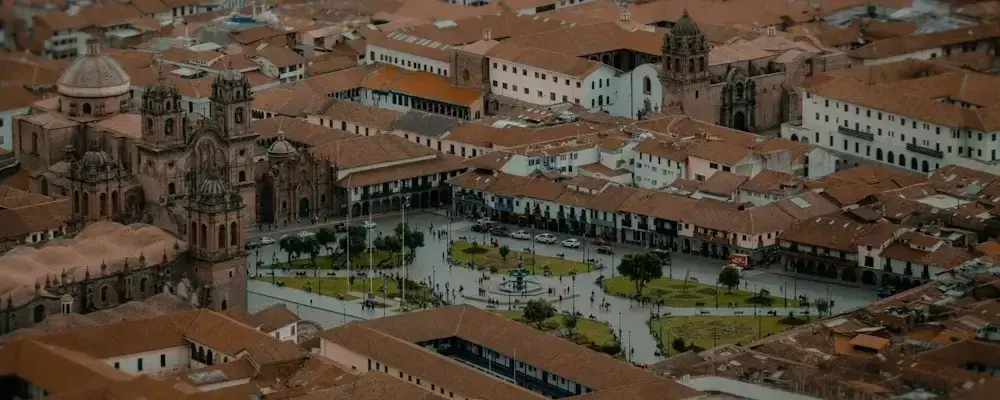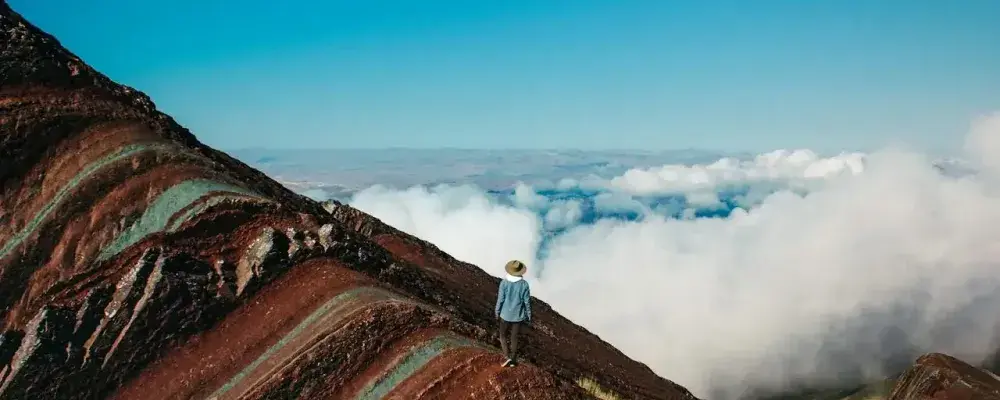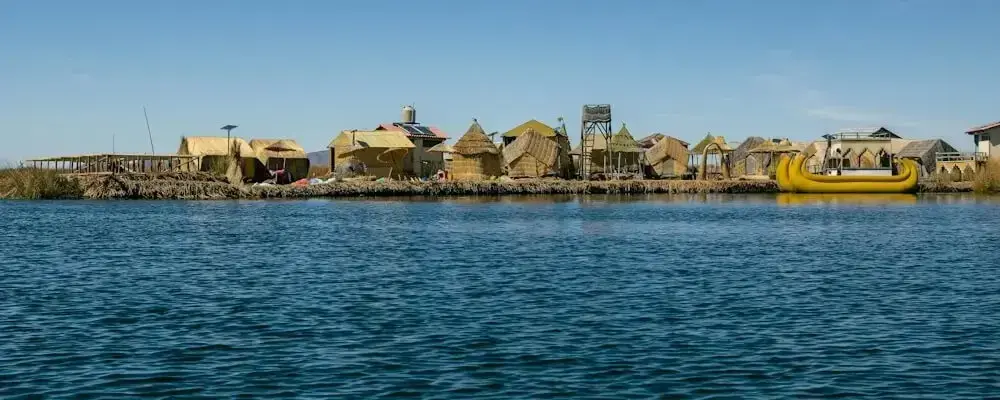Overview
Explore the Colca Canyon, Lake Titicaca and Machu Picchu. From ancient cities, dating back to Egyptian times, prehistoric paintings, and indigenous Andean communities. Through breathtaking valleys, and canyons, to mysterious catacombs hidden in remote areas. This one-of-a-kind trip offers a unique combination of comfort, hidden destinations, authentic connections, exquisite flavors, and unforgettable experiences.
Day 1: Arrival to Lima
Day 2: Civilization Birthplace
Day 3: Lima City and flight to Arequipa
Day 4: Local Flavors, Culture and History
Day 5: Colca Valley, Quarry & Prehistoric Paintings
Day 6: Colca Canyon & Views
Day 7: Sacred Valley Inmersion
Day 8: Sacred Valley: Landscapes and Gastronomy
Day 9: Machu Picchu
Day 10: Machu Picchu on your terms
Day 11: Cobblestone charm
Day 12: Colored Andean Mountain
Day 13: Luxury Trip through Peruvian andes
Day 14: Titicaca Lake
Day 15: ¡Adiós! Altiplano Treasure
Arrival to Lima
Upon your arrival at Lima Airport, be transferred to your hotel. You’ll have the rest of the day at your leisure.
Explore the historic center of Lima, which is full of Spanish architecture. Visit Larco Museum, which is renowned for its extensive pre-Columbian art collection and is considered one of the top museums in South America. Continue to enjoy the unique flavors that Lima has to offer. Peru is regarded as the culinary capital of America and has been recognized as the world's leading culinary destination.
Civilization Birthplace
Discover the oldest city in the Americas, a must-see destination for those who are seeking to explore the ancient world.
Between 3000-1800 BCE, a civilization flourished along Peru's coast, a considerable amount of time before the emergence of Maya and Inca cultures, and before the invention of metal or ceramics. This ancient civilization was home to 3000 residents during its peak, and was built around the same time as the first pyramids in Egypt.
The site is a testament to the ingenuity and creativity of ancient civilizations, and stands as a remarkable example of well-preserved design and architectural complexity. From the monumental stone and earthen platform mounts, to the sunken circular courts, it also includes six large pyramidal structures, this truly is awe-inspiring history.
Set out on an early morning departure from your hotel, to uncover the secrets of this pioneering civilization. Situated near Peru's Pacific coast, just a 4-hour drive from Lima. With the guidance of your expert, explore and absorb the mysteries of this enigmatic place.
Lima City and flight to Arequipa
Take a stroll through colonial and Republican history of Peru, and enjoy up to 15 Peruvian dishes and drinks at Barranco. Lima is a top-rated culinary destination in Latin America as well as worldwide, and the only city to have two restaurants ranking in the top 10 of the World’s 50 Best Restaurants, Central and Maido.
The city is built on a cliff above sea level, offering panoramic views of the Pacific Ocean and the beaches below. Barranco, one of Lima's most appealing areas, which is characterized by its artistic and bohemian charm, with colorful houses and murals lining its streets, is home to many local artists, designers, photographers, and musicians.
The rich cultural heritage of Lima allows travelers to enjoy a spectacular variety of historic and architectural monuments, great examples of unique mixture of Renaissance, Baroque, Neoclassical styles that are noteworthy.
Learn about the colonial and Republican periods of Peru. Enjoy taking pictures of the main buildings of Lima to finally get to descend into the foundations of a church. Here, visit the largest catacombs in Lima, where over 25,000 people were buried in the catacombs up until 1808.
Later, Board your flight to Arequipa, the average elevation here is 7661 ft, Arequipa sits at the base of three towering Volcanoes, Misti, Chachani, and Pichu Pichu, making it a destination that is both unique and stunning.
Local Flavors, Culture and History
Taste authentic recipes and observe cooking techniques that have been unchanged since pre-Hispanic times despite centuries of colonialism. Arequipa offers more traditional Peruvian cuisine than any other city in Peru! Explore a colonial-era city in Peru’s southwestern region, made from a local volcanic material called Sillar, a local volcanic material, and ringed by snow-capped volcanic peaks. A perfect blend of natural beauty, colonial charm, history, culture, and delicious food.
Arequipa offers a mix of trendy and traditional places filled with locals, you’ll visit and to sample more than 17 Peruvian foods and drinks, which will allow you to get a proper taste of Arequipa's most emblematic dishes and drinks while learning about all the historical and cultural details behind each of them.
With this walking food tour in Arequipa, with 5 to 10 mins between each food stop, you’ll not only get a great overview of the local gastronomy, but you will also get to visit the city. We include some art, architecture, and sightseeing, and even more, aside from discovering new flavors, another important component of this food experience is to discover the story, the cultural background, and the current context associated with each bite.
Visit the oldest church in Arequipa, built in 1739, where you will appreciate the Churrigueresco architectural style, wood carvings and murals depicting flowers, fruits, Amazon birds, warriors and cherubs. Finally, you'll explore one of the most impressive colonial religious buildings in Peru. Covering an area of more than 20,246 square meters (218,000 square feet), the 16th-century monastery is a "city within a city" with narrow, graceful streets lined with charming squares and small fountains. Built in 1579, it only opened to visitors in 1970, after a 400-year-old convent that housed nearly 400 nuns.
You will admire a unique panorama of the city's main volcanoes: Misti, Pichu Pichu and Chachani. The view is simply breathtaking, you will feel the mystery in the air, the wonderful combination of nature and this beautiful city. Then, go through one of the most beautiful squares in Peru. The main building has a Neo-Renaissance structure with some references to the Gothic style and is one of the few basilicas in the world where the Vatican flag can be seen.
Colca Valley, Quarry & Prehistoric Paintings
Discover off-the-beaten-path locations while traveling to the Colca Valley.
You'll visit ancient caves, where prehistoric paintings of human figures and camels are found. These rock paintings date back up to 8,000 years. In addition a quarry where the white volcanic rocks used to build most of the significant colonial structures in Arequipa, including the cathedral and numerous old mansions, were extracted.
First stop will be at the Quarry, learn about the white rock extraction process and have the opportunity to interact with the local workers who inherited the techniques from their ancestors and continue to use them nowadays.
Afterwards, travel through breathtaking landscapes that boast snow-capped volcanoes and Andean villages, en route you’ll be able to see local wild vicuñas and viscachas At the highest point of your journey (15,300 feet), you’ll reach a perfect lookout point that offers the best views of the peaks of the various volcanoes surrounding Arequipa.
From here continue to explore the ancient caves which contain more than 500 drawings from the Paleolithic era. Descend down to the valley, and observe how the terrain and elevations vary dramatically, with endless terraces and colcas (storehouses) that are characteristic of the canyon landscapes.
Finally, have time to relax at your hotel or to enjoy any of the warm water of the local thermal baths in the region.
Colca Canyon & Views
Explore the 3rd deepest canyon in the world! Colca Canyon is a geological wonder, and has a depth of approximately 13,648 feet (3,534 meters) into the earth.
Early in the morning, you’ll go to a strategic look out point to contemplate the Colca Canyon’s mystic beauty.
You’ll be overwhelmed by the towering mountains and andean condors (with luck) soaring smoothly on the thermal drifts created in the canyon.
Observe closely andean condors with 8-foot (2.5-meter) wingspans, one of South America’s most amazing animals.
Afterwards, enjoy a traditional lunch and unique views of Colca Canyon at a well-located restaurant, you'll have a good chance of seeing condors without the crowds at Mirador.
Finally, contemplate the andean scenery on your return to Arequipa. Colca is the name of the canyon, river, and valley. The stone reservoirs placed at higher elevations (Colcas) gave this place its name.
Sacred Valley Inmersion
Spend pleasant moments in a farm full of Camelids as Llamas and Alpacas, enjoy impressive views of The Sacred Valley from a privileged and strategic point, learn about the unique relationship between indigenous people and the Pachamama, observe ancient techniques of weaving process, and explore enormous inca terraces.
Board a flight to Cusco, upon your arrival, travel to The Sacred Valley of The Incas. The average elevation here is 9416 ft, which is lower than Cusco (11,000 ft). Amazing Andean landscapes, nature, picturesque landscapes, and great archaeological sites from the Inca empire are abundant in this place.
The Sacred Valley is one of the few places where you can see authentic and native camelids. Visit a llama and alpaca Farm, including some vicunas and guanacos, meet and feed gentle animals that enjoy human company, look closely at these unique animals.
Then, from a well-located viewpoint, enjoy the unique and surrealistic beautiful landscapes that The Sacred Valley offers, the Vilcanota river with cultivation areas next to, small towns with beautiful andean style houses, and the emblematic Wakaywillque peak in the background, take stunning and memorable photos.
Afterwards, visit a indigenous community that will show you a conscious effort to support cultural identity, conserve the biocultural heritage and agrobiodiversity, to protect and preserve the Andean traditional landscape and environment, by combining their own indigenous identity and unique relationship with the land (Pachamama), through the use of their ancient knowledge, innovation systems and with tourism as an alternative development model.
Continue to taste local and organic native meals accompanied with some delicious creamy sauces. This region is home to eight known native and cultivated species and 2,300 varieties of the 235 species and over 4,000 varieties found in the world. Afterwards, some ladies will show you the traditional processes passed down from generation to generation, of spinning, dyeing, and weaving. Observe the types of looms, the ancient and natural techniques of dyeing, using dyeing plants, minerals, and tools. Ath the end of your visit, find ponchos, runners, chullos, blankets, capes, quilts, etc. for sale. You’ll be able to support the improvement of the living conditions of local families that welcomed you here.
Continue to explore the largest fortress city of the Sacred Valley and one of the largest of ancient America, explore ancient Inca burial grounds, irrigation systems, and astronomy centers, all of them well defended by walls, gates and towers. Finally, enjoy the tranquility of The Sacred Valley, surrounded by beautiful landscapes, and mountains.
Sacred Valley: Landscapes and Gastronomy
Discover more than 4,500 salt pools, scattered upon terraced hillsides, witness intriguing circular structures set in the land, and experience the delectable Andean cuisine at a restaurant offering exceptional views of snow-capped mountains in the Sacred Valley.
You will walk alongside salt pools that are estimated to date back to 200 BC-700 AD, and have been extracted for more than 500 years!
Continue through the breathtaking landscapes of the Sacred Valley and Andes mountains, to discover the remarkable proof of the exceptional agricultural engineering utilized to create distinctive microclimates that enable the growing of various crops. This might be the reason for the great 4,000 types of potato in Peru!
The landscapes at this elevation are truly stunning, with green harvested lands, small mud houses, and snow-capped mountains along the way.
Afterwards, enjoy a delicious meal at the top of the Sacred Valley of the Incas. This remote restaurant is located next to a well-preserved colonial temple, which is a great testament to the religious power held during the colonial period. Here, capture unique pictures that will be sure to provoke much curiosity and inquiry about the location. Finally, return to your hotel to relax.
Machu Picchu
Today, explore the magnificent citadel of Machu Picchu, which covers an area of 325 km2, and has been magnificently restored, it is truly impressive.
Embark on an exclusive train service, with a route that surrounds you with the magical landscape, thanks to its panoramic windows and the Observatory Car. An unforgettable journey, while enjoying our authentic culture through the music and the Saqra dance presentation, typical to the local culture. Along the route, the freedom to move between the panoramic car and the elegant observatory car, in order to fully embrace and enjoy the onboard experience.
Upon your arrival, take a 25-minute bus ride up to the Machu Picchu ruins, enjoy a high-quality buffet lunch at a restaurant located just at the entrance of Machu Picchu, and take this opportunity to recharge your energy before visiting the citadel.
After lunch, once most of the crowds have dispersed, you will embark on an amazing exploration of Machu Picchu. Your 2.5-hours private guide will lead you around the site and explain the different buildings and related historical facts.
Machu Picchu is authentic proof of the Inca's advanced engineering and architectural skills. Discover the captivating ancient culture of the Incas and their astonishing engineering projects, which were exceptionally advanced for their time. The use of deep building foundations, and crushed rock for drainage, was the method used for 60% of the construction at Machu Picchu, as per expert engineer Kenneth Wright.
An enchanting, mysterious, and magical essence permeates everything on the site.
A longstanding harmonious and mesmerizing relationship between culture and nature is exemplified by the exceptional scenery and beauty of the mountain landscape.
The structures' orientation was greatly influenced by the location of nearby holy mountains, which explains more the mystery of its atmospheric position in the land.
Within all the sites, there are expressions of the Inca's cosmological vision of existence, which includes myths, legends, and everything they considered sacred.
After the tour, take the bus down, and relax in your hotel.
Machu Picchu on your terms
Today, you have the opportunity to choose between hiking two distinct and incredibly stunning trails, Huayna Picchu or Machu Picchu Mountain. Alternatively, you have the option to visit Machu Picchu citadel again, and further explore its magic. The decision is entirely yours!
If feeling adventurous, hiking Huayna Picchu's steep slope is the best way to enjoy unrivaled views of Machu Picchu and take in its surrounding beauty.
After exploring Machu Picchu to its fullest extent, take a 25-minute bus ride down, and explore the picturesque town of Machu Picchu. Afterwards enjoy lunch overlooking sights of the Urubamba river, and finally board your train to Ollantaytambo, where you’ll connect with a 2-hour land transfer to your hotel in Cusco.
Cobblestone charm
Today, you’ll visit one of the largest 15th-century complexes that features impressive carved stone polygonal blocks, huge blocks weighing over 100 tons and with a height of 8.5 meters. Then delve into the charm of the cobblestone streets of Cusco, giving you a complete experience of this picturesque, historical, ancient and mystic city.
Cusco is the most ancient continuously-inhabited city in the Americas. For 3,000 years now, people have been living in Cusco! From the 13th to the 16th century, the Inca Empire's capital was Cusco. This was until 1533 when Spaniard Francisco Pizarro took over. Nowadays it’s a wonderful blend of the ancient past and the more recent colonial period, where one can admire original Inca temples and monuments, alongside the colonial architecture and modern buildings.
At the designated time you’ll be transferred to the upper zone of Cusco, where you’ll explore megalithic structures, a notable example of monumental architecture in the Inca Empire, that once probably housed more than 5,000 Inca soldiers. This was the base of the Great Rebellion, led by Manco Inca against the Spanish in 1536.
From here you’ll continue by foot through the San Blas neighborhood, which is particularly picturesque, and located in the very heart of the ancient capital of the Incas. The combination of indigenous and colonial influences is captivating. Artists and crafts-people find sanctuary in this place, where talented musicians' sweet melodies fill the air, and the smell of freshly painted canvases remains. You'll stroll through one of the most well-preserved Inca walls in the entire city, where you'll see a multi-angled stone technique, an outstanding example of the Inca's ingenuity, with its 12 angles perfectly aligned with the surrounding wall.
Continue to explore the most important temple of the Incas, initially constructed under the command of Manco Capac in 1200, and finished by Inca Pachacutec in 1400. As per the chroniclers it was covered in gold, even the temple walls were plated with gold, and a large number of gold and silver life-sized shepherds herding alpacas adorned the gardens. All of these precious statues were exchanged by Atahualpa's people, in return for his freedom from the Spanish, who then in 1533 dishonorably executed this last great ruler of the Inca Empire, a huge betrayal after receiving the momentous and valuable goods.
Finally, continue to immerse into the culture of Cusco, visiting an authentic and very popular market, where locals can be found buying their daily produce. You’ll be greeted by vividly colored fruits, herbal remedies, mysterious aromas, tasty Andean soups, and an array of unusual flavors. If you’re an adventurous eater you can sample from the spicy meals on offer, or alternatively opt for a freshly squeezed refreshing juice blend. This market is a real sensory experience and a well-loved attraction of cusco.
Colored Andean Mountain
Explore a must for nature lovers! You'll witness a region of Peru that is seldom explored by travelers! Trek to the Rainbow mountains, whose reddish colors are a result of the sedimentary mineral layers that have been exposed by erosion.
Walk through a stunning valley where you’ll see three rainbow mountains that stand apart from each other, red valleys, and breathtaking landscapes, which include meadows, straw huts, numerous llamas and alpacas in their natural habitat, as well as the local people, birds, and more, all are awe-inspiring. The Majestic Ausangate glacier, a giant mountain with snow capped mountains reaching up to 20,900 feet or 6373 masl, glows in the distance during sunny days.
Furthermore, in exchange for an extra 20-minutes hike up to a stone forest which is a big standing sharp rock, 16,076 ft / 4900 masl, you'll have a picture of the three rainbow mountains and red valleys all in one picture. The landscape's beauty is enough to leave you breathless.
You’ll start early today, set off to the south of Cusco on a 3.5-hours drive till the starting point of a still considered off -the-beaten path trek. This 60-minute hike will take you through andean landscapes via a short, relatively flat path and gentle trek. The summit lies at about 16,000ft. Upon reaching the colored mountains take unique pictures, there’s not over-tourism here. Finally, embark on the 3.5-hour drive back to Cusco.
Time in car: 3.5 hours each way
Distance Traveled: 7 km (4.3 miles)
Difficulty: Easy – moderate
Luxury Trip through Peruvian andes
Enjoy the mysticism offered by the beautiful Andes of Peru aboard a luxury train which is mentioned in The International Society of Railway Travelers as one of the 25 Best Railway Journeys of the World as well as one of the best in South America.
Boar this train and traverse the Peruvian Andes between the imperial city of the Incas and the shores of Lake Titicaca in a ten-hour journey. Elegant Pullman-style carriages, including luxurious dining cars and an Observation Bar Car. Attentive service, Andean fusion cuisine and majestic landscapes ensure an exceptional experience.
The train makes a short stop at La Raya Market, Puno, which at 4,300m above sea level is the highest point of the route. Stop to admire vicunas and alpacas, browse handcrafted woolen scarves and accessories and visit the enchanting local church while enjoying views of the soaring, snow-capped mountains.
Titicaca Lake
You’ll visit a place where time stopped, and have insights into a way of life that is rare to find in today’s modern world. This experience includes indigenous cultures, textiles, breathtaking landscapes, and exploring the highest navigable body of water in the world! With an elevation of 3,812 meters above sea level.
When the conquest of the Incas started to expand, the indigenous people in Puno constructed floating islands using reeds from the lake to shield themselves from capture.
This isolation from the mainland allowed these people to maintain their cultural identity. Nowadays, the islands are still home to only a few thousand people, and tourism is now a significant source of their income.
Similar to these people’s strong reliance on the reed (Totora), another community of people, you’ll visit, has a strong reliance on textiles. Through this ancient art, oral traditions can be passed down into tangible textile pieces that are meticulously made with love and care. These people are renowned for their exceptional craftsmanship, which are recognized as "Masterpieces of the Oral and Intangible Heritage of Humanity" by UNESCO.
In the morning, board a speedboat and navigate Titicaca Lake, the first stop is at the islands made of reed, see how people lived here from ancient times, their customs and learn the daily activities, traditions and how they periodically maintain the islands that are constructed out of the Totora reeds that are abundant in this area.
From here, continue to visit the next island, and enjoy a delicious lunch made with organic and local products. Afterwards, you’ll know why textiles are so important for the inhabitants. Especially for men that through their hats “chullos” display their creativity while also sharing their marital status, dreams, and aspirations.
Later, and if desired you can climb up 500 steps to the main part of the island (12,000 ft) and take amazing pictures of the island and the shimmering Titicaca Lake.
Finally, after a truly unique cultural experience in a stunning natural setting, return to your hotel.
¡Adiós! Altiplano Treasure
Embark on a journey to uncover a hidden treasure of the Altiplano plateau, nestled away from the scenic waters of Lake Titicaca.
At the designated time, a private transfer will take you to the airport of Juliaca. En route, visit a town characterized by its pink houses, character tiled roofs, and pink "sillar". Then continue on to explore a harmonious stone construction with its similarly tile-covered dome. Inside, you will find unexpected surprises that reveal its exquisite history.
The temple's name is attributed to the aluminum sculpture of Michelangelo's Piedad, which is one of only two existing reproductions of the famous sculpture in the world. The catacombs are the most sensational sight you will come across here. You will witness more than a thousand skulls and skeletons arranged in intricate patterns that stretch as far as the eye can see. These skulls and bones were once part of real human bodies, but now form a haunting display. Although eerie, this experience is absolutely captivating.
Finally, after this awe-inspiring visit, proceed to the airport to catch your connecting flight to Lima and onwards to your international flight, taking priceless memories with you.
Price
All our tours are based on private luxury service and can be fully customized to satisfy your personal needs and preferences. Please do not hesitate to contact us at sales@andeantravelexperience.com and receive full assistance planning your customized private tour in Peru.
Our prices often vary based on the requirements of your trip, and will depend on number of travelers, length of time, type of accommodation, etc.
What Included?
- Hotel accommodations for 14 nights with breakfast (Hotels are subject to availability, in case there's no availability for the hotel mentioned, we will book other hotels of the same category).
- Private transportation hotel / airport/train station in every destination.
- All admission fees.
- Excursions as described in the itinerary:
- Meals as described in the itinerary.
- Domestic flights: Lima - Arequipa - Cusco, Juliaca - Lima
- Luxury Train to Puno.
- 24 - hour support from our locally based team
- Wire transfer fees.
What is not Included?
- International airfare
- Travel insurance
- Items of personal nature such as gratuities, internet charges
- Items of personal nature such as excess baggage charges, laundry.
- Beverages and meals not described in the itinerary

Hotel Pullman
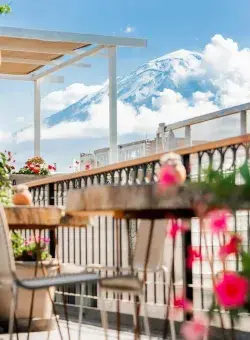
Palla Boutique Hotel
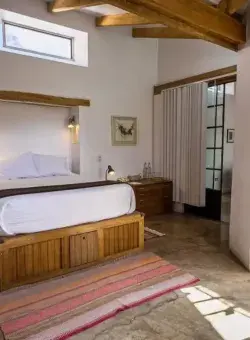
Albergue sup Balcon

El Mapi by Inkaterra

Antigua Casona San Blas superior


